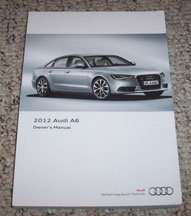Audi- History
Audi is a German automotive brand whose history dates back to the nineteenth century. They are known to produce some of the best luxury and most elegant cars in the world. Audi has a long yet interesting history. It all dates back to 1899 when August Horch founded his company Horch and Cie in Cologne. This automotive company had some exciting rides that gave us today what is known as Audi.
The founder, Horch has a successful career being the owner of Horch and Cie. It was moved to Saxony in 1902. Horch and Cie. Motorwagenwerke AG. Horch had to leave Motorwagenwerke in 1909, after which he made a new company; Audi Automobilwerke in Zwickau.
Audi – The Name
Horch couldn’t use this name for his other company as it was already trademarked by his company.
Horch was having a meeting with Paul and Franz Fikentscher, while Franz’s son was also present in the room. He was reading Latin at that time and therefore suggested the name “Audi” for his brand. Audi is a Latin word, which is a singular imperative of Audire. The word “audire” means “to listen.” The company was named Automobilwerke GmbH Zwickau in 1910 and was later changed to Audiwerke AG Zwickau in 1915.
Four Rings – Four Brands
Ever since the European automobile market started flooding with US-manufactured cars, the pressure started building up on the German automobile companies. As they felt left behind, they came up with the idea of merging the top automobile companies in Germany. The State Bank of Saxony was the first one to think of this merger. Then it was in 1932 when we finally saw the Auto Union AG.
An American automobile company, DKW, bought the majority of Audiwerke’s shares in 1928. The Dresden and Zwickau models all contained Rickenbacker’s 8-cylinder engines. The three famous automobile companies Horch, DKW, and Wanderer collaborated with Audiwerke to form Auto Union AG in Chemnitz.
The four interlocking rings in Audi’s logo symbolize the merging of four different automobile manufacturers; DKW, Wanderer, Horch, and Audi. As a result of which, Audi became the second-largest automobile manufacturing company in Germany.
The Four Partner Companies
Horch: This automobile company was founded by August Horch in 1904. The straight-twin engines with V8 and V12 engines were a unique trait of the vehicles produced by this company.
Audi: Audiwerke was also founded by Horch after he abandoned his previous automobile company. The cars produced by Audi USA had inline–4, 6, and 8-cylinder engines.
DKW: High-performance, reliable, practical, and economical cars were the key features of DKW automobiles. This company was founded by Danish engineer Jørgen Skafte Rasmussen in 1916.
Wanderer: This company was built in 1911. They were known to create mid-range vehicles, from small 4-cylinder vehicles to luxurious 6-cylinder ones.
Audi During World War II
Audi had always been conscious of including advanced technologies in every model they put forward. Therefore, we got to see a six-cylinder engine with a front–drive wheel vehicle from Audi right after the merger. It was the Audi Front.
Audi AG was known to produce luxury cars. But the economic problems that arose after World War II propelled the Auto Union to make affordable vehicles. However, the plants where automobiles were manufactured were being used for military arms production. Later on, most of the plants were destroyed in the bombings, which is the reason Auto Union didn’t remain functional at all. The assets of Auto Union were seized by the Soviet Union and removed from the commercial register.
This was when the company completely disappeared from the automobile market and returned after about two decades.

Rebirth at Ingolstadt
Auto Union had a new start in 1949. The building that was used as a deposit for spare parts of Auto Union was turned into the headquarters. However, the company took at least ten years to attract heavy investors for manufacturing.
In 1964, Volkwagen took a 50% stake in Audi. This was done as a strategic alliance to utilize the manufacturing and engineering experience of the Volkswagen teams.
In 1965, an amazing model with a four-stroke engine, F 102, was launched. Since DKW was associated with two-stroke technology only, DKW was discontinued, and that was when Audi was reborn.
The official comeback of Audi was in 1968, marked by the production of the Audi 100. The Audi Owner’s Manual of that time contained all the necessary information to operate that vehicle. Although they were not allowed to manufacture any new product, Ludwig Kraus, along with some engineers, developed this car. Everyone was so impressed with it that they allowed for more production.
Later in 1969, NSU merged with Auto Union, giving rise to Audi NSU Auto Union AG, which brought bigger and better models such as A8. This merging gave us an amazing variety and top-notch models that continued till the 2000s. They observed the record-breaking sale in May 2011. We have seen amazing hybrid electric models from this company as well.
Frequently Asked Questions
What is the average age of the Audi Driver?
Young professionals aged 35-54 are the bulk of Audi owners
Which costs less- BMW or Audi?
Generally speaking, Audi is less expensive
Is the A6 a luxury car?
The A6 aims to be a luxury sedan model like the A8, but generally with a smaller engine and overall design. However, the Audi A6 is still definitely a luxury vehicle relative to the automobile market as a whole.

